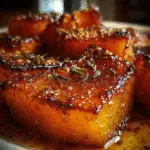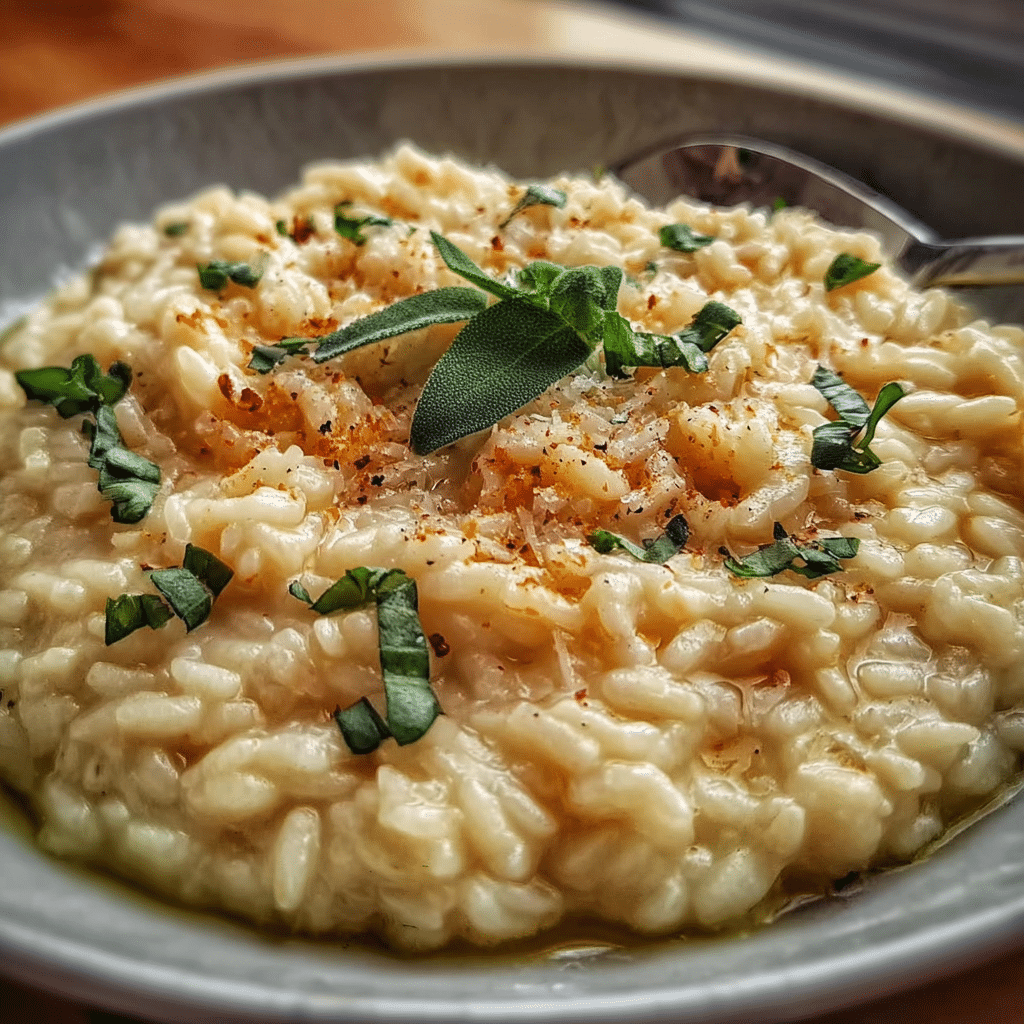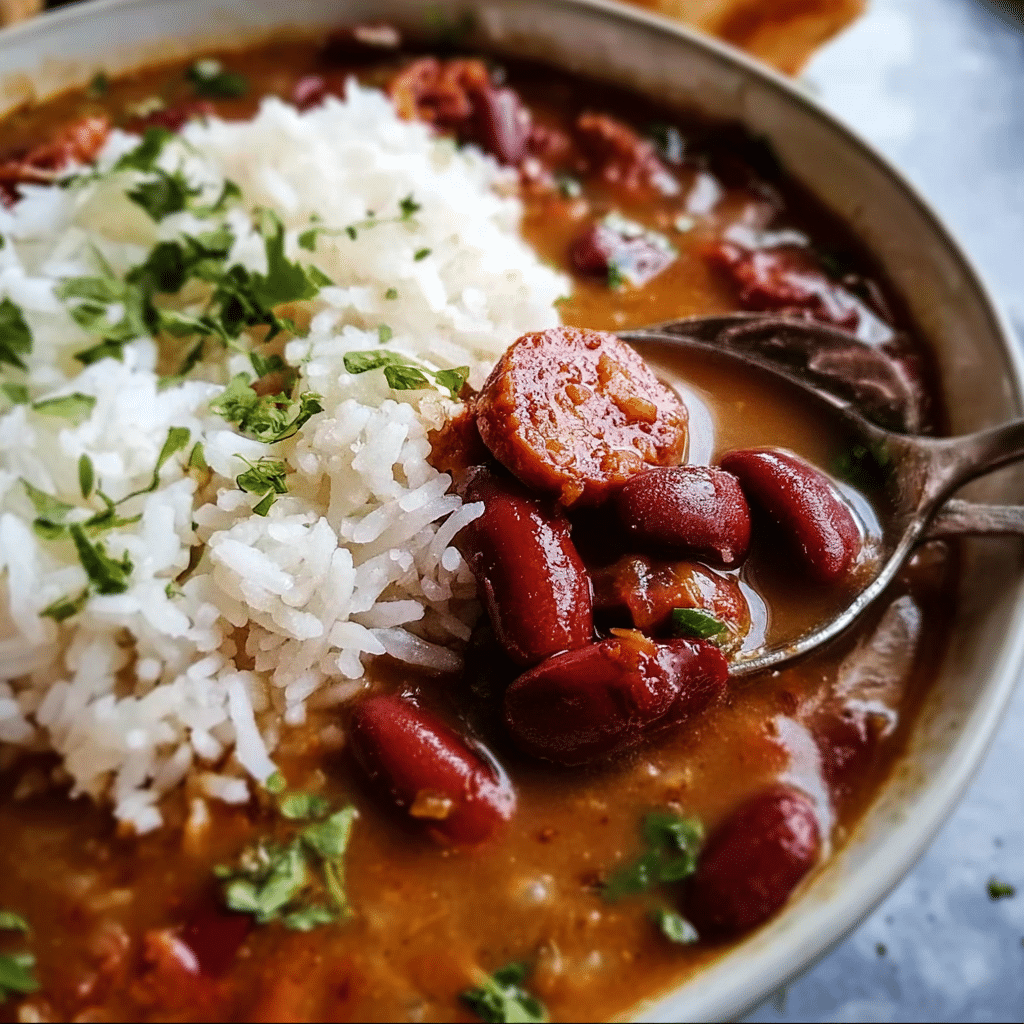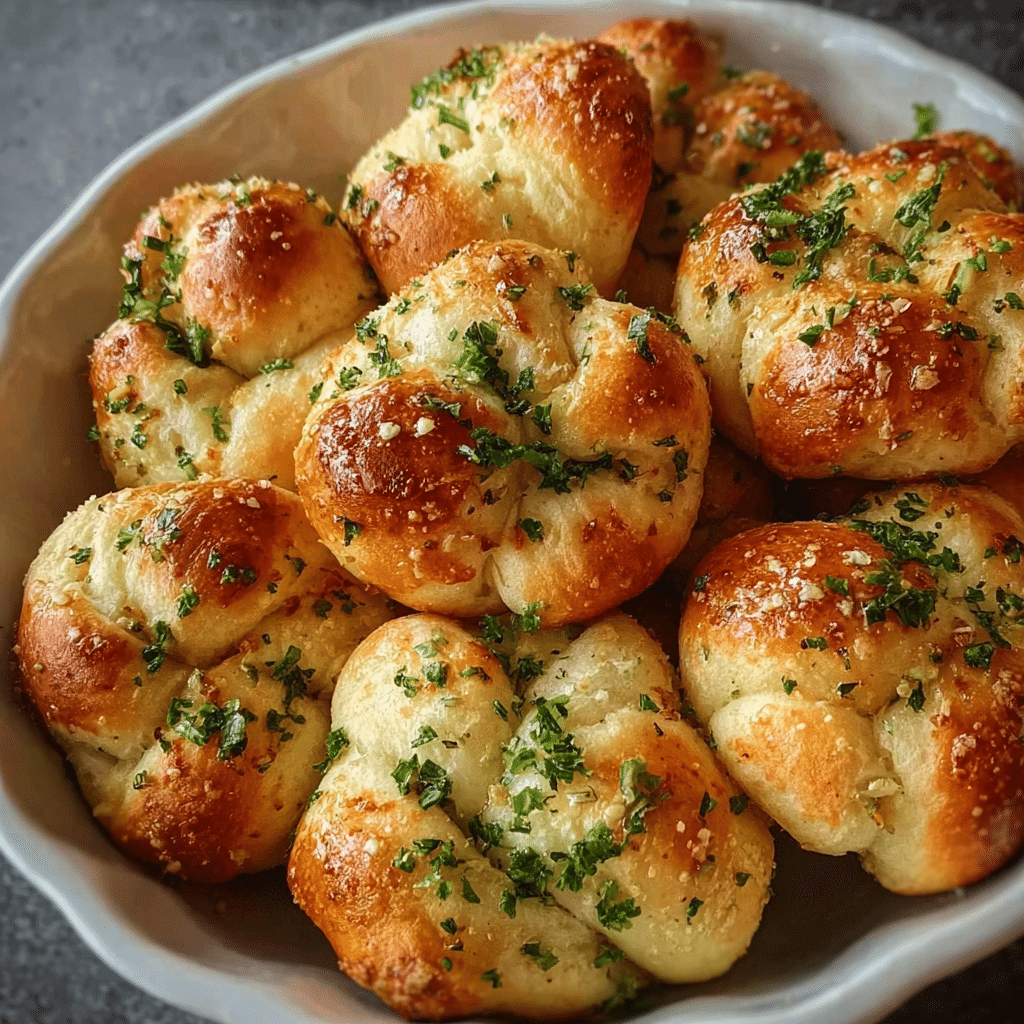Brown sugar roasted butternut squash is a dish that evokes warmth, comfort, and a little bit of magic every time I prepare it. I still remember the first time I stumbled upon this delightful recipe. It was a chilly autumn evening, and I was flipping through an old family cookbook that had been handed down through generations. The golden leaves outside were dancing in the crisp breeze, and my kitchen was filled with the aromatic scent of cinnamon and nutmeg wafting from my oven. As I turned the pages, a simple yet enticing recipe caught my eye: brown sugar roasted butternut squash. I had never thought of sweetening squash, and I was eager to give it a try.

As I prepped the squash, I couldn’t shake the feeling that I was participating in a culinary tradition that dates back centuries. Butternut squash, a staple in many cultures, has roots in North America, where it was cultivated by Native Americans long before European settlers arrived. The combination of the earthy flavors of the squash and the rich sweetness of brown sugar resonated with me, offering a glimpse into how ingredients can transform a dish and evoke memories. That first bite was nothing short of a revelation — the caramelized edges, the tender flesh, and the balanced sweetness danced on my palate, making it clear that this dish would become a staple in my home.
The Story Behind This Recipe
What makes brown sugar roasted butternut squash stand out among other squash recipes is its simplicity and versatility. The recipe itself is incredibly straightforward, requiring just a handful of ingredients: butternut squash, brown sugar, butter, and a pinch of salt. Yet, when combined and roasted, it creates a dish that feels indulgent and special. It’s a dish that effortlessly adapts to any occasion, whether it’s a cozy family dinner, a festive holiday gathering, or a potluck with friends. Each time I make it, I think of my children eagerly waiting at the dinner table, their faces lighting up as the warm dish is served. The rich flavors and delightful aroma make it a family favorite, eliciting smiles and hearty compliments.
This recipe is not just a meal; it’s an experience that brings families together. In today’s fast-paced world, finding time to prepare nourishing and delicious meals can be daunting. However, this brown sugar roasted butternut squash dish can be prepared in under an hour, making it a perfect solution for busy families. The oven does most of the work, allowing you to spend time with your loved ones while your kitchen fills with the enticing aroma of roasting squash. It’s a dish that invites conversation and laughter, creating memories that linger long after the last bite.
Seasonally, this dish is a classic for autumn and winter months when butternut squash is at its peak. The vibrant orange color of the squash and the warm, comforting flavors make it a perfect addition to holiday meals or cozy weeknight dinners. As the leaves change color and the air grows crisp, the thought of brown sugar roasted butternut squash brings a sense of nostalgia and warmth. It’s a dish that embodies the spirit of the season, offering comfort and nourishment during the colder months.
Ultimately, what I hope to share with you in this guide is not just a recipe, but a journey into the heart of what makes brown sugar roasted butternut squash so special. Through tips, anecdotes, and the rich history behind this dish, I promise you’ll discover why it deserves a place in your kitchen. Whether you’re a seasoned chef or a novice cook, this recipe is accessible and rewarding. Let’s dive into the world of flavors and embark on a culinary adventure that celebrates the beauty of simple ingredients transformed into something extraordinary.
The Rich History and Cultural Significance of brown sugar roasted
The history and cultural significance of brown sugar roasted butternut squash is a rich tapestry woven through time, connecting different regions and traditions. To understand this dish, we must first explore the origins of butternut squash itself. Native Americans were the first cultivators of squash, along with corn and beans, in what is known as the “Three Sisters” planting method. This method not only provided a balanced diet but also showcased the harmony of these ingredients when grown together. Butternut squash, with its sweet flavor and creamy texture, became a staple in many Indigenous diets, especially in the Northeastern United States.
Origins and History
As European settlers arrived, they adopted this versatile vegetable into their own cooking, often incorporating it into both savory and sweet dishes. The addition of brown sugar to roasted squash is believed to be a more modern twist on traditional recipes, reflecting the evolving palate and the influence of various culinary traditions. The sweetness of brown sugar complements the natural starchiness of the squash, creating a dish that resonates with both historical and contemporary tastes. Over the years, various regions have developed their own unique takes on roasted squash, often influenced by local ingredients and culinary customs.
In the American South, for example, you might find variations that include pecans or maple syrup, while in New England, spices like cinnamon and nutmeg might be added to enhance the flavor profile further. Each version tells a story of the culture and environment from which it originates. As the dish has evolved, it has remained a beloved staple, especially during the fall and winter months when squash is in abundance.
Cultural Significance
Brown sugar roasted butternut squash holds a significant place in various cultural celebrations and gatherings. In many families, it has become a tradition to serve roasted squash during Thanksgiving dinners, symbolizing the harvest and the bounty of the season. The dish is often shared among friends and family, fostering a sense of community and gratitude. Many cultures also associate squash with warmth and comfort, making it a fitting dish for holiday feasts and winter celebrations.
In contemporary culinary circles, this dish has gained popularity not only for its taste but also for its nutritional benefits. Chefs around the world have embraced the flavor profile of brown sugar roasted butternut squash, often showcasing it in upscale restaurants or home kitchens. This dish has become a canvas for culinary creativity, allowing chefs to play with flavors, textures, and presentations while keeping the essence of the original recipe intact.
Nutritional Benefits
Speaking of benefits, butternut squash is a nutritional powerhouse. Rich in vitamins A and C, it supports immune function and promotes healthy skin. The high fiber content helps with digestion, while the antioxidants found in squash have been linked to a reduced risk of chronic diseases. When you add brown sugar, you’re not only enhancing the flavor but also creating a balance that encourages people to enjoy their vegetables. The sweetness can entice even the most reluctant eaters, making it an excellent way to introduce squash to children or those unfamiliar with its taste.
In conclusion, brown sugar roasted butternut squash is more than just a side dish; it’s a celebration of history, culture, and health. As we explore its rich origins and variations, we uncover the stories of countless families who have enjoyed this dish across generations. It’s a beautiful reminder of how food connects us, not just to our own heritage but also to the broader tapestry of culinary traditions. So, as you prepare to create this delightful dish, remember that you’re participating in a long-standing tradition that celebrates the beauty of seasonal ingredients and the joy of shared meals.
Essential Ingredients for Perfect brown sugar roasted
When it comes to creating the ultimate brown sugar roasted butternut squash perfection, the selection of ingredients can make or break your dish. Each component plays a vital role in achieving the rich, caramelized flavors that we all love. Let’s dive into the essential ingredients you’ll need for this delightful recipe, along with some insights and tips on each one.
Essential Ingredients
- 1 medium butternut squash (about 2-3 pounds) – This is the star of our dish. Select a squash that feels heavy for its size, with a smooth, firm skin and no soft spots. A perfectly ripe butternut squash will have a rich tan color and should feel solid when you tap it.
- 4 tablespoons unsalted butter – Butter adds richness and helps with caramelization. Use high-quality butter for the best flavor, and consider using organic for a cleaner taste.
- 1/4 cup brown sugar – Brown sugar is the key to achieving that sweet, caramelized glaze. Choose light brown sugar for a milder flavor or dark brown sugar for a richer taste. The molasses content in brown sugar is essential for that deep sweetness.
- 1 teaspoon ground cinnamon – Cinnamon adds warmth and depth to the dish. Opt for fresh ground cinnamon for the best aroma and flavor. If you’re feeling adventurous, consider using a blend of spices like nutmeg or allspice.
- Salt and pepper to taste – These simple seasonings enhance the natural flavors of the squash. Use kosher salt for a cleaner taste and freshly cracked black pepper for added complexity.
- Optional: Maple syrup (for drizzling) – For those who love a little extra sweetness, a drizzle of maple syrup at the end can elevate your dish. Choose 100% pure maple syrup to avoid any artificial additives.

Sweet & Savory: Brown Sugar Roasted Butternut Squash Perfection
Ingredients
- 1 medium sized Butternut Squash seeds and skin removed and roughly chopped into 1” cubes
- 2 tablespoon Olive Oil
- 1 heaping tbsp Brown Sugar
- ½ teaspoon Dried Rosemary
- ½ teaspoon Cinnamon
- 1 teaspoon Kosher Salt
- 1 tablespoon Honey **optional**
Instructions
-
Preheat oven to 400F degrees.
-
Add cubed butternut squash to a baking sheet and add olive oil, brown sugar, dried rosemary, cinnamon and kosher salt. Toss everything together then evenly spread the pieces across the baking sheet.
-
Place on the middle rack of the oven and bake for 30-40 minutes, tossing the squash half way through.
-
Remove from the heat and season with salt and pepper if needed.
-
If you prefer it even sweeter, you can add a drizzle of honey on top.
Shopping Tips
When shopping for butternut squash, the best time to find it is in the fall and winter months, as it’s in season. Check your local farmer’s market or grocery store for the freshest options. Look for butternut squash that is heavy for its size with no blemishes. If you’re not familiar with prepping a butternut squash, don’t worry! They are relatively easy to work with. Just make sure to have a sharp knife and a sturdy cutting board. You’ll want to slice it in half lengthwise, scoop out the seeds, and then cut it into cubes for roasting.
The quality of your butter can impact the overall taste of your dish, so consider finding a local dairy or a brand that uses grass-fed milk. The same goes for your brown sugar—while it’s widely available, some brands offer more robust flavors than others. If you can, try to find a brand that emphasizes natural ingredients.
Substitutions and Alternatives
For those with dietary restrictions, there are several substitutions you can make without sacrificing flavor. If you’re dairy-free, coconut oil or vegan butter can replace the unsalted butter. For a sugar alternative, coconut sugar or agave syrup can work instead of brown sugar, although the flavor profile will differ slightly.
If you’re looking to cut down on sugar, you can reduce the amount of brown sugar and enhance the natural sweetness of the butternut squash by roasting it longer or adding a pinch of stevia as an alternative sweetener. Additionally, if you’re not a fan of cinnamon, consider substituting with a spice you enjoy or omitting it entirely to let the squash shine on its own.
As for storage, keep your butternut squash in a cool, dry place away from sunlight. Once cut, it can be stored in the refrigerator for about five days, wrapped tightly. The brown sugar should be kept in an airtight container to prevent it from hardening, and the butter should always be refrigerated.
In conclusion, the ingredients you choose are fundamental in crafting delicious brown sugar roasted butternut squash that will leave your guests raving about the flavors. Pay attention to quality, freshness, and the seasonal availability of each item, and you’ll be well on your way to achieving that perfect dish.
Detailed Step-by-Step brown sugar roasted Cooking Instructions
Detailed Step-by-Step Brown Sugar Roasted Cooking Instructions
Now that you have gathered your essential ingredients, it’s time to transform them into a mouthwatering dish. The process of making brown sugar roasted butternut squash may seem straightforward, but there are nuances to ensure that you achieve that coveted caramelized finish. Let’s walk through the detailed step-by-step cooking instructions to guide you through this culinary adventure!
Preparation Steps
- Preheat your oven: Start by preheating your oven to 400°F (200°C). This temperature is ideal for roasting vegetables, allowing them to caramelize beautifully while retaining a bit of bite.
- Prep your butternut squash: Carefully slice the butternut squash in half lengthwise using a sharp chef’s knife. This can be a bit tricky, so make sure to apply steady pressure. Once halved, scoop out the seeds with a spoon. You can save the seeds for roasting later!
- Cube the squash: After removing the seeds, cut each half into 1-inch cubes. Uniformity in size is important for even cooking, so take your time with this step.
- Mise en place: Gather all your ingredients—brown sugar, butter, cinnamon, salt, and pepper—so that everything is ready to go once you start mixing.
Cooking Process
- Mix the ingredients: In a large mixing bowl, combine the cubed butternut squash, melted butter, brown sugar, cinnamon, salt, and pepper. Toss well until the squash is evenly coated. This step is crucial as it ensures that each piece is flavorful.
- Prepare your baking sheet: Line a baking sheet with parchment paper to prevent sticking and make cleanup easier. Spread the butternut squash mixture in a single layer. Avoid overcrowding the pan, as this can lead to steaming instead of roasting.
- Roast the squash: Place the baking sheet in the preheated oven. Roast for about 25-30 minutes, stirring halfway through to ensure even browning. The squash should be fork-tender and caramelized at the edges. Visual cues include a golden-brown color and a slightly softened texture.
- Check for doneness: At the 25-minute mark, check the squash for tenderness. It should easily pierce with a fork but still hold its shape. If it needs more time, continue roasting for an additional 5-10 minutes.
Final Assembly
- Drizzle with maple syrup (optional): If you desire an extra touch of sweetness, drizzle some pure maple syrup over the roasted squash just before serving. This adds a delightful contrast to the brown sugar roasted flavor.
- Garnish and serve: Transfer the roasted butternut squash to a serving dish. You can garnish it with a sprinkle of fresh herbs like parsley or sage for a pop of color and freshness. Serve warm as a side dish or even as a main vegetarian entrée!
- Storing leftovers: If you have any leftovers, allow the roasted butternut squash to cool completely before transferring it to an airtight container. It can be stored in the refrigerator for up to 5 days and reheats beautifully in the oven or microwave.
Throughout this cooking process, remember that the key to achieving the best brown sugar roasted butternut squash lies in your attention to detail. Pay close attention to the mixing and roasting stages, and don’t be afraid to adjust seasoning to suit your taste. With these instructions, you’re well on your way to creating a dish that will warm your heart and delight your palate!
Professional Tips and Techniques for brown sugar roasted
When it comes to preparing brown sugar roasted butternut squash, there are several professional tips and techniques that can elevate your dish from ordinary to extraordinary. I’ve spent years perfecting my approach to this dish, and I’m excited to share some insider secrets that will help you achieve butternut squash perfection in your kitchen.
Professional Techniques
One of the first steps in creating the perfect brown sugar roasted butternut squash is selecting the right squash. Look for a firm, symmetrical squash with a dull skin; these are indicators of ripeness. The flesh should feel heavy for its size, and the stem should be intact. Once you have your squash, it’s essential to cut it properly. Using a sharp knife, slice off the ends before halving it lengthwise. This will give you a stable base to work with, making it easier to scoop out the seeds with a spoon. For even roasting, cut the squash into evenly sized cubes—aim for about 1-inch pieces. This ensures that every piece caramelizes beautifully, soaking up the brown sugar goodness.
When it comes to roasting, preheating your oven to 425°F (220°C) is crucial. The high heat helps to caramelize the sugars in the squash and the brown sugar, resulting in a lovely golden-brown exterior. To enhance the flavors even more, consider tossing your squash with olive oil, salt, and freshly cracked black pepper before adding the brown sugar. The oil helps the sugar adhere to the squash while also promoting even browning.
For those looking to take their brown sugar roasted butternut squash to the next level, adding spices can create a more complex flavor profile. Cinnamon, nutmeg, or even a pinch of cayenne pepper can bring a delightful warmth and depth to the dish. Just make sure not to overdo it—balance is key. A sprinkle of fresh herbs like thyme or rosemary can also add a fresh touch that contrasts beautifully with the sweetness of the squash.
Troubleshooting Guide
Even with the best intentions, sometimes things can go awry in the kitchen. If your brown sugar roasted squash isn’t browning as you expected, it may be due to overcrowding on the baking sheet. Make sure to give the squash enough space to allow for proper air circulation. If you find that your squash is getting too browned before it’s fully cooked, consider lowering the oven temperature slightly or covering the pan with aluminum foil for part of the cooking time.
Another common issue is the texture of the squash. If it turns out too mushy, it may have been overcooked. Keep a close eye on it during the last few minutes of roasting. On the flip side, if it’s too hard, you might need to increase the cooking time. Always taste a piece to check for doneness—it’s the best way to ensure you hit that perfect spot.
Presentation Tips
Once your brown sugar roasted butternut squash is beautifully caramelized and smelling divine, it’s time to present it in an appetizing way. A simple yet effective way to elevate your dish is by serving it on a rustic wooden platter or a colorful ceramic dish. Garnish with a sprinkle of fresh herbs to add a pop of color. If you want to impress your guests, consider drizzling a balsamic reduction over the top for a sophisticated touch. This not only adds flavor but also creates a visually stunning contrast against the golden squash.
As for beverage pairings, a crisp white wine like Sauvignon Blanc complements the sweetness of the squash beautifully. If you prefer something non-alcoholic, consider a tart apple cider or a sparkling water with a splash of lemon juice. These options will enhance the flavors without overpowering the dish.
Finally, if you’re preparing this dish as part of a larger meal, consider how it will harmonize with the other elements on your table. The brown sugar roasted butternut squash pairs wonderfully with savory proteins like roasted chicken or pork, making it a versatile addition to any dinner spread.
Creative Variations and Adaptations of brown sugar roasted
One of the most delightful aspects of cooking is the freedom to experiment and adapt recipes to suit your tastes and seasonal availability. When it comes to brown sugar roasted butternut squash, there are endless possibilities for creative variations and adaptations. Let’s explore some of these options, making sure to keep things exciting in the kitchen!

Seasonal Variations
Seasonality plays a significant role in the flavors and ingredients we use in our cooking. In the fall, consider throwing in some diced apples or pears alongside your butternut squash before roasting. The fruits will caramelize beautifully, adding a sweet and fruity contrast to the rich squash. In spring, you might swap out the brown sugar for maple syrup and add a handful of asparagus spears to the roasting pan for a delightful combination of flavors and textures.
Another seasonal twist is to incorporate nuts into your dish. Pecans or walnuts can add a wonderful crunch and a nutty flavor that complements the sweetness of the brown sugar roasted butternut squash. Try tossing some chopped nuts in during the last 10 minutes of roasting to prevent them from burning.
Dietary Adaptations
As dietary preferences and restrictions become more common, it’s essential to know how to adapt your recipes accordingly. For those following a keto diet, consider using a sugar substitute like erythritol or stevia instead of brown sugar. This will allow you to enjoy the caramelized flavors without the extra carbohydrates. Vegans can easily enjoy this dish by using oil instead of butter, and gluten-free eaters can feel confident knowing this recipe is inherently gluten-free.
Additionally, if you’re looking to add some protein, consider tossing in chickpeas or lentils with the squash. These legumes will not only boost the nutritional profile but will also absorb some of the delicious flavors from the brown sugar and spices.
Creative Twists
Don’t be afraid to think outside the box! Try adding spices from different cuisines to create an international fusion dish. For instance, a sprinkle of garam masala along with the brown sugar can bring a delightful Indian-inspired twist to your roasted squash. Alternatively, you could use a mix of cumin, coriander, and smoked paprika for a touch of North African flavor.
If you’re feeling adventurous, consider using different cooking methods for your brown sugar roasted butternut squash. Instead of roasting, try grilling it for a smoky flavor, or use a slow cooker for a hands-off approach that allows the flavors to meld beautifully over time. If you have leftovers, they can be transformed into a delicious soup by blending them with vegetable broth and a splash of coconut milk for creaminess.
In conclusion, the versatility of brown sugar roasted butternut squash allows for endless creativity and experimentation in the kitchen. By incorporating seasonal ingredients, dietary adaptations, and international flavors, you can create a dish that is uniquely yours, while still celebrating the rich, sweet goodness of this beloved vegetable.
Storage, Reheating, and Meal Prep for brown sugar roasted
When it comes to enjoying the delightful flavors of brown sugar roasted butternut squash, understanding how to properly store, reheat, and meal prep this dish is just as important as mastering the roasting technique. After all, the magic of a well-cooked meal can easily fade if not handled correctly. Let’s dive into the nuts and bolts of keeping your brown sugar roasted butternut squash fresh and delicious.
Short-term Storage
Once you’ve whipped up a batch of brown sugar roasted butternut squash, the first thing you want to do is let it cool down to room temperature before storing it. This prevents condensation from forming inside the storage container, which can lead to sogginess. I remember the first time I skipped this step; my roasted squash turned into a mushy mess after a day in the fridge! Now, I always make sure to give it a proper cooling period.
For short-term storage, airtight containers are your best friend. Glass containers with tight-sealing lids work wonderfully not only for preserving flavor but also for easy reheating in the microwave or oven. You can also use plastic containers, but ensure they are BPA-free. When stored properly in the refrigerator, your brown sugar roasted butternut squash should last about 3 to 5 days. Just be sure to label your containers with the date to keep track of freshness.
Freezing and Long-term Storage
If you find yourself with an abundance of brown sugar roasted butternut squash, freezing is an excellent option to extend its shelf life. Freezing preserves flavor and nutrients, so you can enjoy your favorite seasonal dish long after the squash is out of season. To freeze, first, allow the roasted squash to cool completely. Then, portion it into freezer-safe bags or containers. I often use the flat freezer bag method—this allows for easier stacking and quicker thawing!
When packaging, remove as much air as possible to prevent freezer burn, which can ruin the texture and flavor of your brown sugar roasted squash. Properly stored, it can last in the freezer for up to 3 months. To thaw, simply transfer the frozen squash to the refrigerator the night before you plan to use it. Alternatively, you can reheat it straight from frozen, although this may take a bit longer.
Reheating Best Practices
Reheating your brown sugar roasted butternut squash can be a breeze if done correctly. The goal is to maintain the creamy texture and rich flavors that make it so enjoyable. I recommend the oven as the best reheating method. Preheat your oven to 350°F (175°C) and spread the squash out on a baking sheet. Cover it with aluminum foil to retain moisture, and heat for about 15-20 minutes, or until warmed through.
If you’re short on time, the microwave is a convenient option as well. Place your squash in a microwave-safe dish, add a splash of water to create steam, and cover it with a microwave-safe lid. Heat in 1-minute intervals, stirring in between until it’s hot. However, I find that the oven method really brings back the roasted flavor more effectively than the microwave.
Meal prep is another fantastic way to enjoy your brown sugar roasted butternut squash throughout the week. You can roast a big batch at the beginning of the week and use it in various meals—tossing it into salads, blending it into soups, or even adding it to grain bowls. Portioning your squash into single-serving containers can make weekday meals a breeze, allowing you to simply grab and go.
When it comes to food safety, always remember the golden rule: when in doubt, throw it out! If your brown sugar roasted butternut squash has been in the fridge for more than 5 days, or if it starts to develop an off smell or texture, it’s best to err on the side of caution. The shelf life can vary depending on how it was cooked and stored, but with proper techniques, you can enjoy your roasted squash safely and deliciously.
In conclusion, understanding how to store, freeze, and reheat your brown sugar roasted butternut squash can not only extend the life of this delightful dish but also enhance your culinary experience. With these tips in hand, you can savor the flavors of autumn all year round!
Nutritional Benefits and Health Information
As we indulge in the warm, inviting flavors of brown sugar roasted butternut squash, it’s essential to recognize the nutritional benefits that come along with this delicious dish. Not only is it a treat for the taste buds, but it also packs a punch in terms of health. Let’s explore the nutritional breakdown and health benefits of this seasonal favorite.
Nutritional Profile
Butternut squash is a nutrient-dense food that is low in calories yet high in essential vitamins and minerals. A typical serving of roasted butternut squash (about 1 cup) contains approximately 82 calories, 22 grams of carbohydrates, 2 grams of protein, and less than 1 gram of fat. It’s also a good source of dietary fiber, boasting about 6 grams per serving, which is great for digestive health.

When we talk about vitamins and minerals, butternut squash shines brightly. It is particularly rich in vitamin A, providing over 200% of the daily recommended intake in just one serving. This vitamin is crucial for maintaining healthy vision, skin, and immune function. Butternut squash also contains notable amounts of vitamin C, vitamin E, magnesium, and potassium, making it a powerhouse of nutrition that complements any diet.
Health Benefits
Incorporating brown sugar roasted butternut squash into your meals can have several health benefits. The high fiber content helps regulate digestion and can aid in weight management by promoting feelings of fullness. Additionally, the antioxidants found in butternut squash, particularly carotenoids, have been linked to reduced inflammation and a lower risk of chronic diseases such as heart disease and diabetes.
Moreover, the natural sweetness of butternut squash pairs beautifully with brown sugar, creating a dish that not only satisfies your sweet tooth but also provides essential nutrients. The healthy carbs found in squash also offer a steady energy source, making it an excellent choice for those looking to maintain a balanced diet.
Dietary Considerations
For those following specific dietary plans, brown sugar roasted butternut squash can fit seamlessly into a variety of eating styles. For instance, it is naturally gluten-free, making it a suitable option for those with gluten sensitivities. It’s also vegan and vegetarian-friendly, providing plant-based nutrition that can be enjoyed by a wide range of diets.
However, if you’re watching your sugar intake, it’s important to consider the amount of brown sugar you use in the recipe. While a little brown sugar can elevate the flavor and complement the natural sweetness of the squash, you can adjust the amount or even use alternatives like maple syrup or honey to suit your dietary needs.
In comparison to similar dishes, brown sugar roasted butternut squash stands out not only for its flavor but also for its nutritional profile. Many traditional roasted vegetable dishes may rely heavily on added fats or sugars, whereas this dish maintains a balance of natural sweetness and health benefits.
In conclusion, the nutritional benefits of brown sugar roasted butternut squash make it a delicious and healthy addition to your meal rotation. With its impressive vitamin and mineral content, along with its versatility in various diets, this dish is not only a feast for the senses but also a boon for your health. So, the next time you roast up a batch, relish in the fact that you’re nourishing your body while indulging in something truly delightful!
Frequently Asked Questions About Brown Sugar Roasted
What is the best way to prepare butternut squash for roasting?
To prepare butternut squash for roasting, start by cutting off the stem and bottom ends. Then, carefully slice the squash in half lengthwise and scoop out the seeds and stringy flesh using a spoon. Once the seeds are removed, peel the skin off using a vegetable peeler, and chop the squash into roughly 1-inch cubes. This size ensures even cooking and caramelization. For easier peeling, consider microwaving the squash for 1-2 minutes to soften it slightly.
Why should I use olive oil for roasting butternut squash?
Olive oil is an excellent choice for roasting butternut squash due to its flavor and health benefits. It has a high smoke point, making it suitable for roasting at high temperatures without breaking down. Additionally, olive oil helps to achieve a crispy exterior while keeping the interior tender. For added flavor, you can infuse the olive oil with garlic or herbs before tossing it with the squash. Be sure to coat the cubes evenly for the best results.
What role does brown sugar play in a roasted butternut squash recipe?
Brown sugar adds a delightful sweetness and depth of flavor to roasted butternut squash, enhancing its natural sugars. The caramelization process during roasting creates a rich, golden-brown exterior that pairs beautifully with the squash’s creamy texture. To achieve the best results, distribute the brown sugar evenly over the squash, allowing it to melt and create a glaze as it roasts. For a more complex flavor, consider pairing the brown sugar with spices like cayenne pepper or nutmeg.
How can I enhance the flavor of roasted butternut squash using dried rosemary?
Dried rosemary adds a fragrant, herbal note to roasted butternut squash, complementing its sweetness beautifully. To enhance the flavor, crush the dried rosemary in your hands before adding it to release its essential oils. Combine it with the olive oil and brown sugar for even distribution. If you’re a fan of fresh herbs, you can substitute dried rosemary with fresh rosemary, using about three times the amount, as fresh herbs have a milder flavor.
What is the purpose of adding cinnamon to roasted butternut squash?
Cinnamon adds warmth and spice to roasted butternut squash, creating a comforting flavor profile that enhances the dish’s sweetness. When combined with brown sugar, cinnamon can elevate the overall taste and aroma, making it more appealing. For the best results, sprinkle the cinnamon evenly over the squash along with the other seasonings to ensure it is well-distributed. If you enjoy experimenting, consider adding a pinch of nutmeg or allspice for an extra layer of flavor.
How much kosher salt should I use when seasoning roasted butternut squash?
Using about 1 teaspoon of kosher salt helps to balance the sweetness of the butternut squash and enhances its natural flavors. It’s important to sprinkle the salt evenly over the squash before roasting to ensure that every bite is well-seasoned. If you’re watching your sodium intake, you can reduce the amount or use a salt substitute. Remember, you can always taste and adjust the seasoning after roasting, but it’s harder to fix an under-seasoned dish.
Is honey necessary in a brown sugar roasted butternut squash recipe?
Honey is an optional ingredient that can add an extra layer of sweetness and a hint of floral flavor to your roasted butternut squash. If you prefer a sweeter taste or want to enhance the caramelization, adding a tablespoon of honey can be beneficial. Drizzle it over the squash in the last few minutes of roasting to prevent it from burning. If you’re looking for a healthier alternative, consider using maple syrup for a different flavor profile.
Conclusion: Mastering the Perfect brown sugar roasted
Creating the perfect brown sugar roasted is more than just following a recipe—it’s about understanding the techniques, ingredients, and cultural significance behind this beloved dish. Throughout this comprehensive guide, we’ve explored everything from the historical origins to modern variations, ensuring you have all the knowledge needed to make this recipe your own.
Whether you’re a beginner cook or an experienced chef, the techniques and tips we’ve shared will help you create a brown sugar roasted that’s not only delicious but also meaningful. Remember that cooking is a journey of discovery, and each time you make this dish, you’ll learn something new.
We encourage you to experiment with the variations we’ve discussed, adapt the recipe to your dietary needs, and most importantly, share it with the people you love. Food has the incredible power to bring people together, and Brown Sugar Roasted Butternut Squash Perfection is the perfect dish to create lasting memories around your dinner table.





